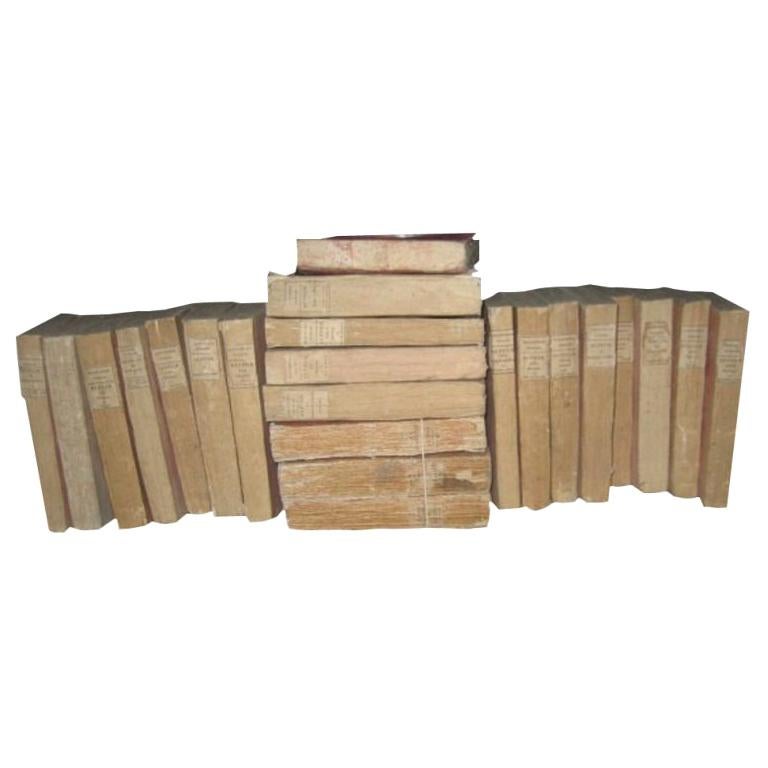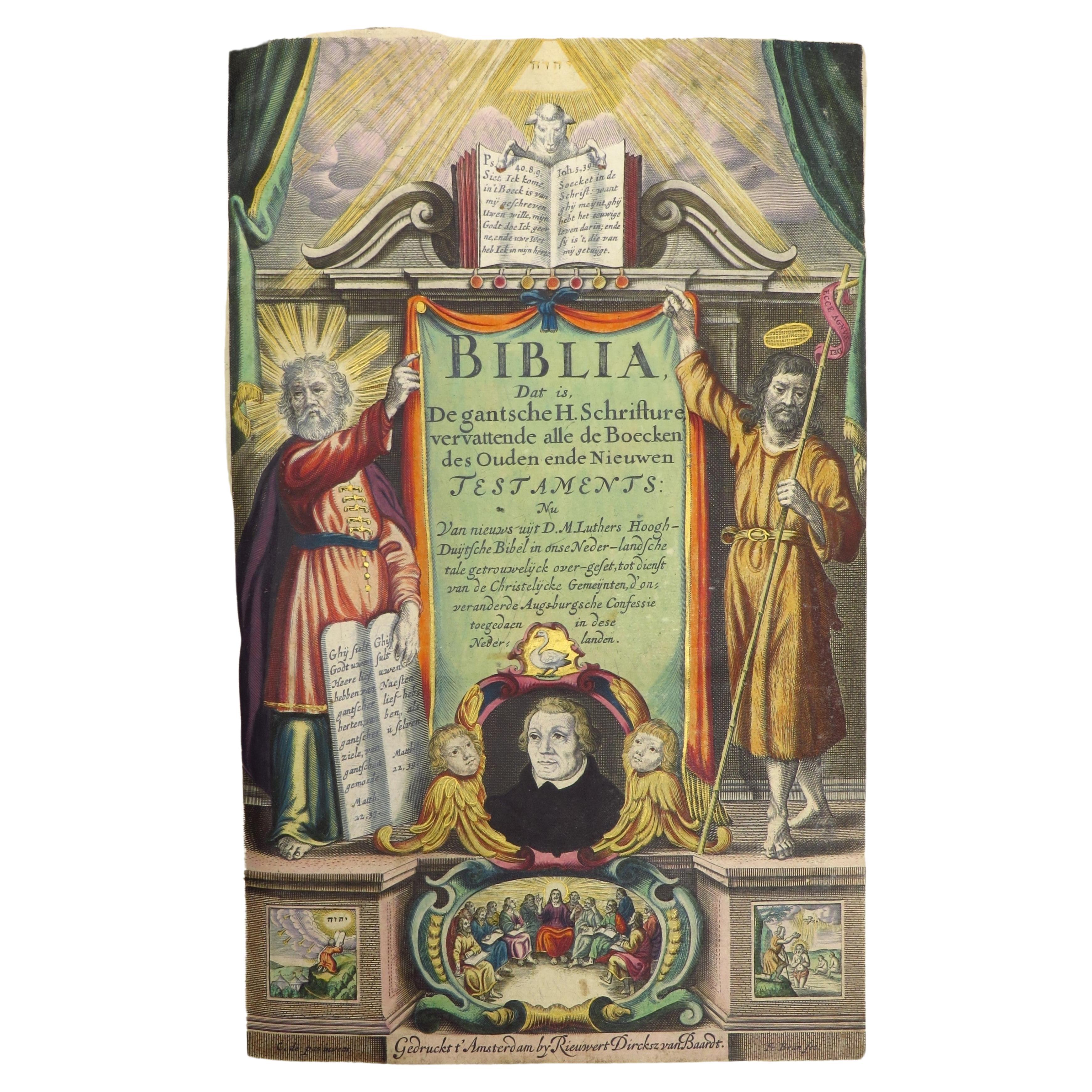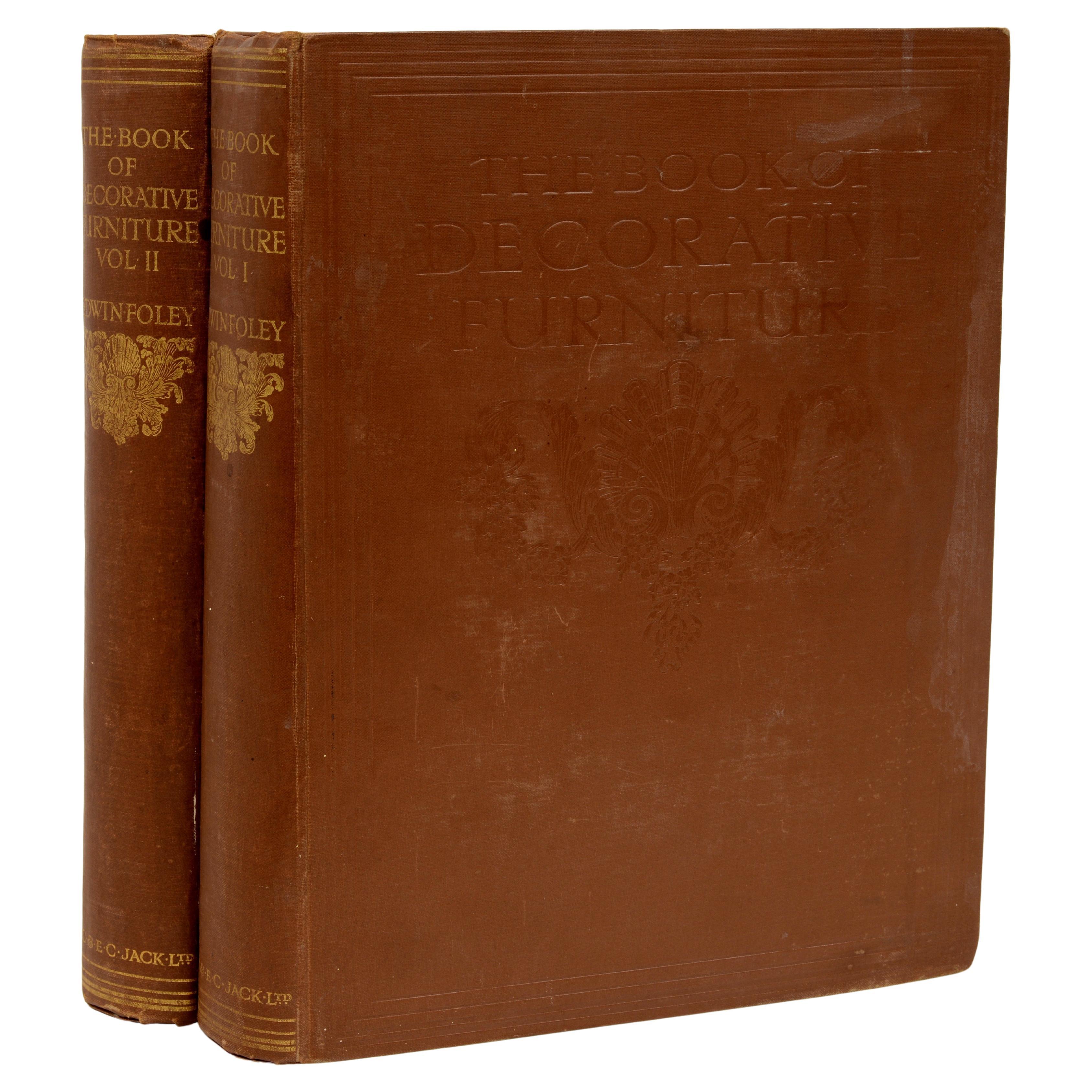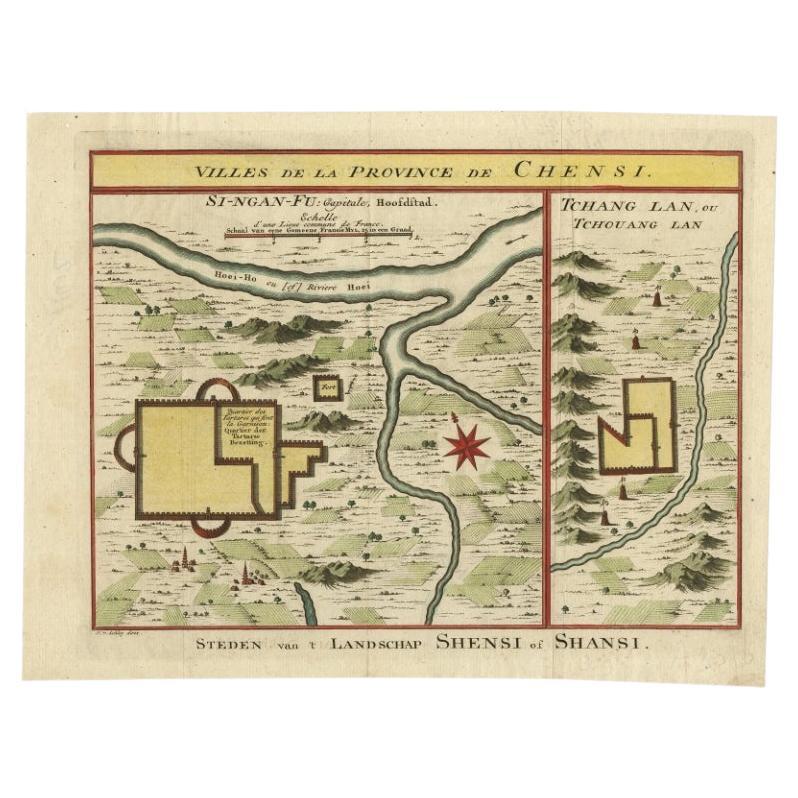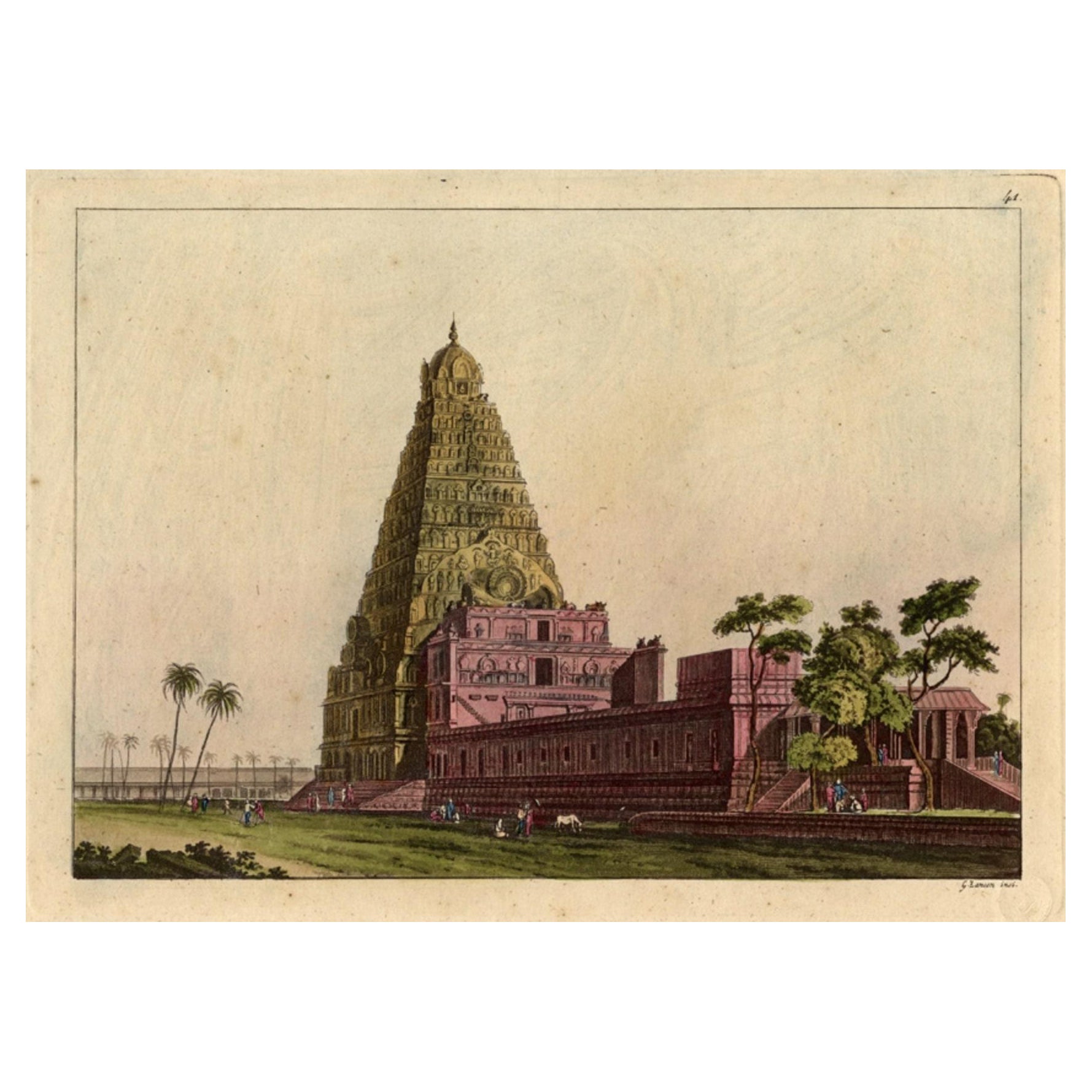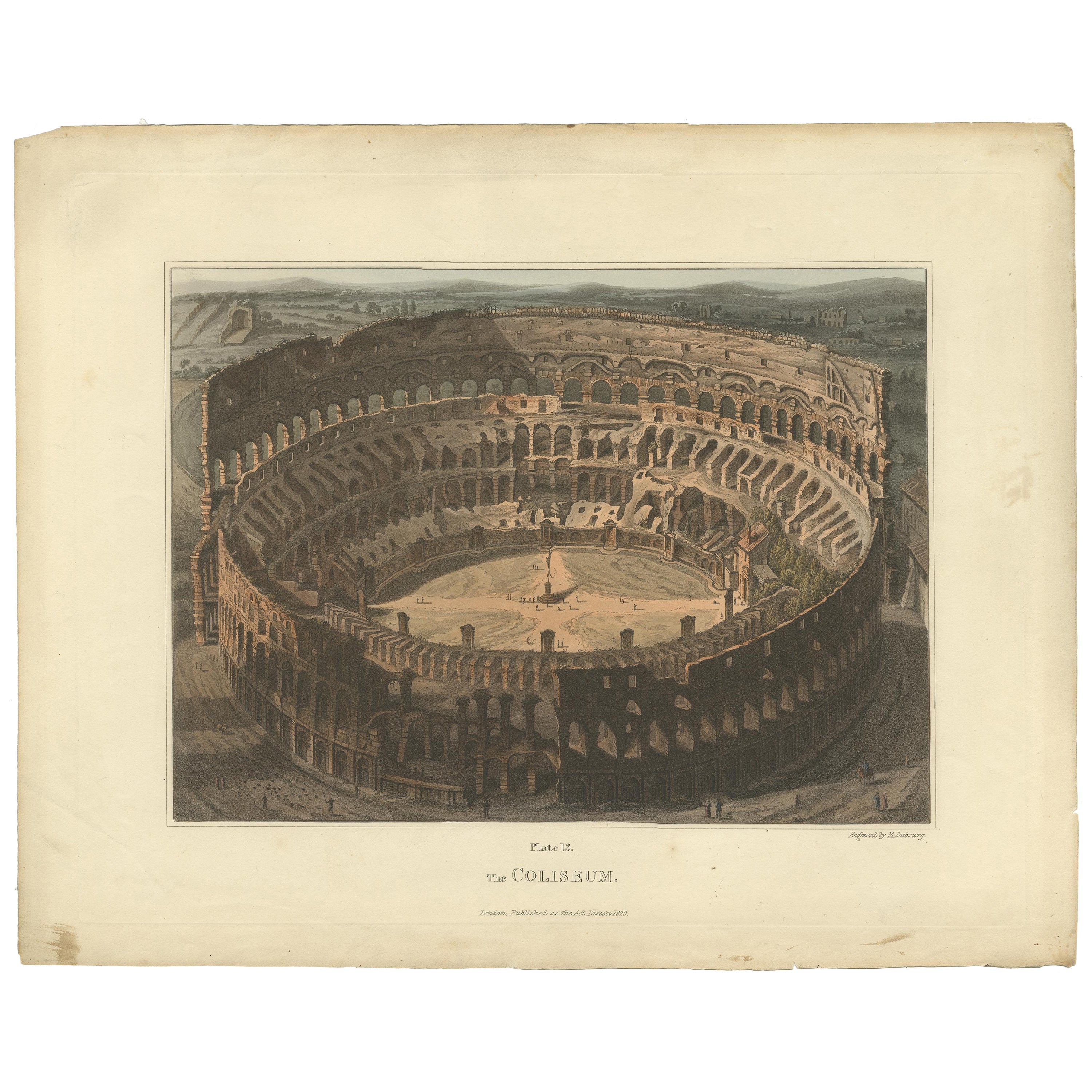Items Similar to Hand-coloured set of Buffon’s Histoire naturelle in its most luxurious form
Want more images or videos?
Request additional images or videos from the seller
1 of 21
Hand-coloured set of Buffon’s Histoire naturelle in its most luxurious form
About the Item
Publisher: Buffon, Georges-Louis Leclerc de
Place / Date: Dordrecht, Abraham Blussé, 1766-1799
Size: 38 parts in 21 volumes.
Large 4to. With more than 1100 hand-coloured engraved plates, 10 maps, 1 folding engraved table, and an engraved portrait of Buffon (by Houbraken, with an extra-added uncoloured portrait pasted on the verso). Contemporary, uniform half tanned sheepskin.
Finely hand-coloured copy of the 1766-1799 Netherlands edition (in French) of Buffon's justly famous Histoire naturelle, the complete first series, covering the formation of the earth, humans, mammalian quadrupeds and apes, reptiles and amphibians, birds, fishes and even minerals, also describing the royal collection of Louis XV. Buffon's work presents ''for the first time a complete survey of natural history in popular form'' (PMM).
The present set, in the works rarest and most expensive form, is exquisite. The subscription notices periodically mention copies printed on fine paper, but they do not mention hand-coloured copies. Landwehr, discussing the first Dutch-language edition (no. 46, by the same publisher) cites contemporary sources referring to four forms of publication: on regular paper, on large paper, with hand-coloured plates and (most expensive of all) with hand-coloured plates and vignettes.
Buffon opens the first volume with an essay called "Théorie de la terre", where "for the first time he outlines a satisfactory account of the history of our globe and of its development as a fitting home for living things. In his view the earth had been originally part of the sun which was broken off by the impact of a comet. It gradually condensed from its gaseous state, and the forces shaping its continents and mountains are still active'' (PMM).
From his exhaustive research for the Histoire naturelle des quadrupèdes, Buffon came to the conclusion that it was necessary to reintroduce the notion of family. Breaking with the spirit of his time, Buffon attempted to separate science from metaphysical and religious ideas. As a disciple of Locke he denied idealistic metaphysics, stating that mental abstractions can never become principles of either existence or real knowledge; these can come only as the results of sensation'' (DSB).
Buffon did not believe in the fixity of species but proposed that nature is constantly changing. For instance, in the case of quadrupeds he stated that there were 38 basic types that degenerated over the centuries. According to Buffon, the monkey is a degenerated man, the ass a degenerated horse. His interest in the precise connection between groups of animals that are obviously related prompted Buffon to devote much attention to comparative anatomy in the Histoire naturelle. He also stressed the importance of the study of earth sciences for botany and zoology. "Life and animation, instead of being a metaphysical point in being, is a physical property of matter" (DSB). Buffon's views on the origin and development of species and the history of the earth show how he tried to describe natural phenomena by means of science, discarding metaphysical and religious explanations. "He was the first to create an autonomous science, free of any theological influence ... [and] establish[ed] the intellectual framework within which most naturalists up to Darwin worked" (DSB).
Buffon was assisted by the anatomist Louis Daubenton and others, and the final volumes were completed after his death under the direction of Comte de Lacépède.
With the owners name "Sir G[eorge]. Murray" (1772-1846) on the half-title of most volumes. He was a Scottish soldier from a noble family, who served in Flanders, the West Indies, Egypt and elsewhere, eventually becoming quarter master general of Wellingtons staff in Spain and Portugal and reaching the rank of General. He was Knighted in 1813, held governorships of several colonies and the military college at Sandhurst, along with leading posts at the Colonial Office (where he helped establish the colony of Western Australia) and served from 1823 as a member of the British parliament. With the bookplate of the German entrepreneur and bibliophile Hans Dedi (1918-2016). Lacking a few half-titles (for example in the bird volumes 1 and 2), but otherwise in very good condition (most of the plates fine), with occasional stains and spots, a few tears and repairs, the binding also with some minor wear and repairs.
A splendid copy of a seminal monument of natural history.
Landwehr, Coloured plates 45 and 46, Dutch ed.; Nissen, ZBI, 678.
- Creator:
- Dimensions:Height: 9.85 in (25 cm)Width: 1.19 in (3 cm)Depth: 7.09 in (18 cm)
- Sold As:Set of 21
- Style:Dutch Colonial (Of the Period)
- Materials and Techniques:
- Place of Origin:
- Period:
- Date of Manufacture:1766-1799
- Condition:
- Seller Location:ZWIJNDRECHT, NL
- Reference Number:1stDibs: LU9419237706292
About the Seller
New to 1stDibs
Joined in the past six months.
No Reviews Yet
Vetted Seller
These experienced sellers undergo a comprehensive evaluation by our team of in-house experts.
1stDibs seller since 2023
- ShippingRetrieving quote...Ships From: ZWIJNDRECHT, Netherlands
- Return PolicyA return for this item may be initiated within 14 days of delivery.
More From This SellerView All
- Dutch Luther Bible with fine hand-coloured and highlighted in gold illustrationsBy Claes Jansz. Visscher (II)Located in ZWIJNDRECHT, NLBeautifully bound mid-17th-century "Visscher edition" of the Dutch Luther Bible with expertly hand-coloured and highlighted in gold illustrations. [BIBLE - LUTHER - DUTCH]. VISSCHER...Category
Antique 1640s Dutch Dutch Colonial Books
MaterialsGold
- Seminal guide to the East and West Indies, with 42 coloured maps and platesBy Jan Huygen van LinschotenLocated in ZWIJNDRECHT, NLSeminal guide to the East and West Indies, with 42 double-page and folding plates, including 6 maps, all engravings beautifully coloured by a contemporary hand LINSCHOTEN, Jan Huygh...Category
Antique Early 17th Century Dutch Dutch Colonial Books
MaterialsPaper
- Hand-colored 16th century copy of the famous Moerentorf BibleBy Henry MoretLocated in ZWIJNDRECHT, NLPublisher: Daniel Vervliet and Hendrik Swingen for Jan I Moretus & Jan I van Keerberghen Place / Date: Antwerp, 1599 Biblia sacra. Dat is de geheele heylighe schrifture bed...Category
Antique 16th Century Belgian Baroque Books
MaterialsWood, Paper
- Colored wall map of the WORLDBy ChambonLocated in ZWIJNDRECHT, NL“Mappe Monde, contenant les Parties Connues du Globe Terrestre” CHAMBON, Gobert-Denis (France, 17.. - 1781) Paris, Longchamps et Janvier, 1754 Size H. 115 x W. 145 cm. Gobert-Denis Chambon made copper engraving after the work of Guillaume De L’Isle, published in 1754 by Jean Janvier and S.G. Longschamps. A huge wall map of the world in two hemispheres printed on two sheets, depicting the Eastern and Western hemispheres supported by two male figures, decorated at the bottom right and left with two celestial hemispheres (boreal and southern) and at the bottom in the middle with an armillary sphere, in addition. This map is most notable for its depiction of the Sea of Japan labeled "Mer de Corée" and of "Mer de L'Ouest" or Sea of the West - a great sea, easily the size of the Mediterranean, to flow from the then-known Strait of Juan de Fuca...Category
Antique Mid-18th Century French French Provincial Maps
MaterialsWood, Paper
- A pair of extremely rare Valk table globesBy Gerard and Leonard ValkLocated in ZWIJNDRECHT, NLTitle on the globes: VALK, Gerard and Leonard. [Terrestrial globe:] Cosmotheore, caelesti nostro globo, par, et plane novus, hic terrestris ut existeret, certo scias, errore veterum ...Category
Antique 18th Century Dutch Dutch Colonial Globes
MaterialsOther
- An exceptional pair of BLAEU table globesBy Willem BlaeuLocated in ZWIJNDRECHT, NLA very rare set of globes, 9 inch / 23cm, with an overall height of 38 cm, Amsterdam, dated 1602, but published after 1621. In their original stands with circular wooden horizon rings, covered with printed paper, supported by four legs and brass meridian rings supported by a single column. The terrestrial and celestial globe are made up of a set of 12 engraved gores, heightened in gold and Arctic ice caps, printed on paper and mounted on a plaster sphere of papier maché. Each sphere is mounted in a graduated brass meridian ring with the production number stamped at the back of the ring. Both globes are mounted on four-legged ebonized oak Dutch stands, which support the horizon ring. The legs are connected by two crossbeams which support a circular base plate with central support for the meridian ring. The horizon rings are covered with printed paper. With usual defects: paper equinoctial tables present gaps that are filled and restored; small splits along gores; several partially deleted entries; on the globe, the date 1602 and the text of the cartouche in America, are illegible ; small scattered spots but in general in good condition for such an early globe pair of which presently only 19 pair are recorded. These 9-inch globes are among the rarest since very few copies of them are known to exist, in comparison with the smaller or larger globes of Blaeu (4, 6, 13.5, and 26 inches). Blaeu's terrestrial globes were highly valued and were much in demand, because of the care with which they had been prepared, because of the efforts to give the latest information on discoveries, and because of the loxodromic lines that made them of special value to navigators. His celestial globes were appreciated for the fact that he had been the pupil of Tycho Brahe, who was himself known to be the greatest astronomer of his time. Willem Janszoon Blaeu (1571–1638), originally trained in astronomy, he quickly became a leading maker of maps, atlases and instruments. Blaeu’s globes were luxury items for wealthy and intellectual merchants and nobility who benefited from Blaeu’s access through the Dutch East India Company to the latest navigational discoveries and geographical information. Willem Jansz Blaeu collected information that Dutch mariners gathered from around world and brought back to Amsterdam. Crews were instructed to record information about the lands they visited and the skies they saw. Blaeu incorporated these observations in maps and globes. Through his web of contacts and thanks to assiduous research, he was also able to obtain the most recent information about the latest discoveries in the western hemisphere and the South Pacific, where Dutch explorers were particularly active at the time. Since the globe was published after 1618, Blaeu was able to include the discoveries made by Henry Hudson in his attempt to find a passage to the East Indies. He also included recent Pacific discoveries of the celebrated voyages of Willem Cornelis Schouten and Jacob Le Maire, who both traversed the South Pacific and the Atlantic. The findings of Schouten and Le Maire in the Tierra del Fuego region are also incorporated. The Strait of Le Maire is drawn and the hypothetical southern continent is labelled “Terra Australis Incognita Magalanica”. Olivier van Noort’s track is drawn and labelled. His route is indicated with a broken line and the words: “Navigationis Olivierij ductus” (several times). There are various decorative features, such as animals on the different continents, many ships on the high seas and allegorical and mythical figures around the cartouches. The nine-inch globe is not just a smaller version of the one published in 1599. Drawings of animals and people do often correspond to those on the earlier globe, but Blaeu made several significant changes. - The west coast of North America is drawn differently and the river system of Brazil is altered. - The hypothetical southern continent is labelled: Terra Australis Incognita Magallanica. - There are nine ocean names in handsome curling letters: Mare Congelatum, Mare Atlanticum, Oceanus Aethiopicus, Mare Arabicum et Indicum, Mare di India, Oceanus Chinensis, Mar del Zur, Mare Pacificum, Mar del Nort. - Willem Blaeu...Category
Antique 17th Century European Dutch Colonial Globes
MaterialsOther
You May Also Like
- Vintage Buffon BooksBy Georges-Louis Leclerc, Comte de BuffonLocated in Napa, CAVintage Buffon books from France circa 1825 with original red covers and labels. "Natural History Encyclopedia" & "Traveling Encyclopedia". Buffon Books: $100 Non Buffon Books: $7...Category
Antique 19th Century French Books
MaterialsPaper, Ink
- The Book of Decorative Furniture, Its Form, Colour, & History in 2 Vols. 1st EdLocated in valatie, NYThe Book of Decorative Furniture, Its Form, Colour and History. 2 Volume Set by Edwin Foley. London: T. C. & E. C. Jack, 1910-11. 1st Ed hardcovers. 100 tipped in color plates with 1,000 drawings in the text with charts of British woodwork styles, woods used, etc. The periods and styles covered include Chippendale, late Colonial America...Category
Early 20th Century Books
MaterialsPaper
- Antique Hand-Coloured Map of Cities in the Province of Shanxi in China, 1749Located in Langweer, NLAntique print titled 'Villes de la Province de Chensi - Steden van 't Landschap Shensi of Shansi'. Interesting set of two local town plans of ""Si-Ngan-Fu: Capitale."" and ""Tchang L...Category
Antique 18th Century Maps
MaterialsPaper
- Rare and Hand Coloured Engraving of A Temple in South East AsiaLocated in Langweer, NLDescription: Plate 41: (Temple in South East Asia). This plate shows a temple in South East Asia. Also palm trees are depicted. This very rare attractive original old antique print /...Category
Antique 1820s Religious Items
MaterialsPaper
- Set of 5 Antique Prints of Ancient Buildings in Rome and its Vicinity, 1844Located in Langweer, NLBeautiful set off of 5 aquatint prints of old Rome, Italy, including the popular view of the Coliseum. Matthew Dubourg (active 1786 – 1838) From "Views of the Remains of Ancient Bu...Category
Antique Mid-19th Century European Prints
MaterialsPaper
- Antique Old Hand-Coloured Print of Excavations found in Napels, Campania c.1790Located in Langweer, NLUntitled antique print of antiquities. This print most likely originates from an edition of 'Le Antichita di Ercolano Esposte' by Ottavio Antonio Bayardi. Published circa 1790. T...Category
Antique 1790s Prints
MaterialsPaper
